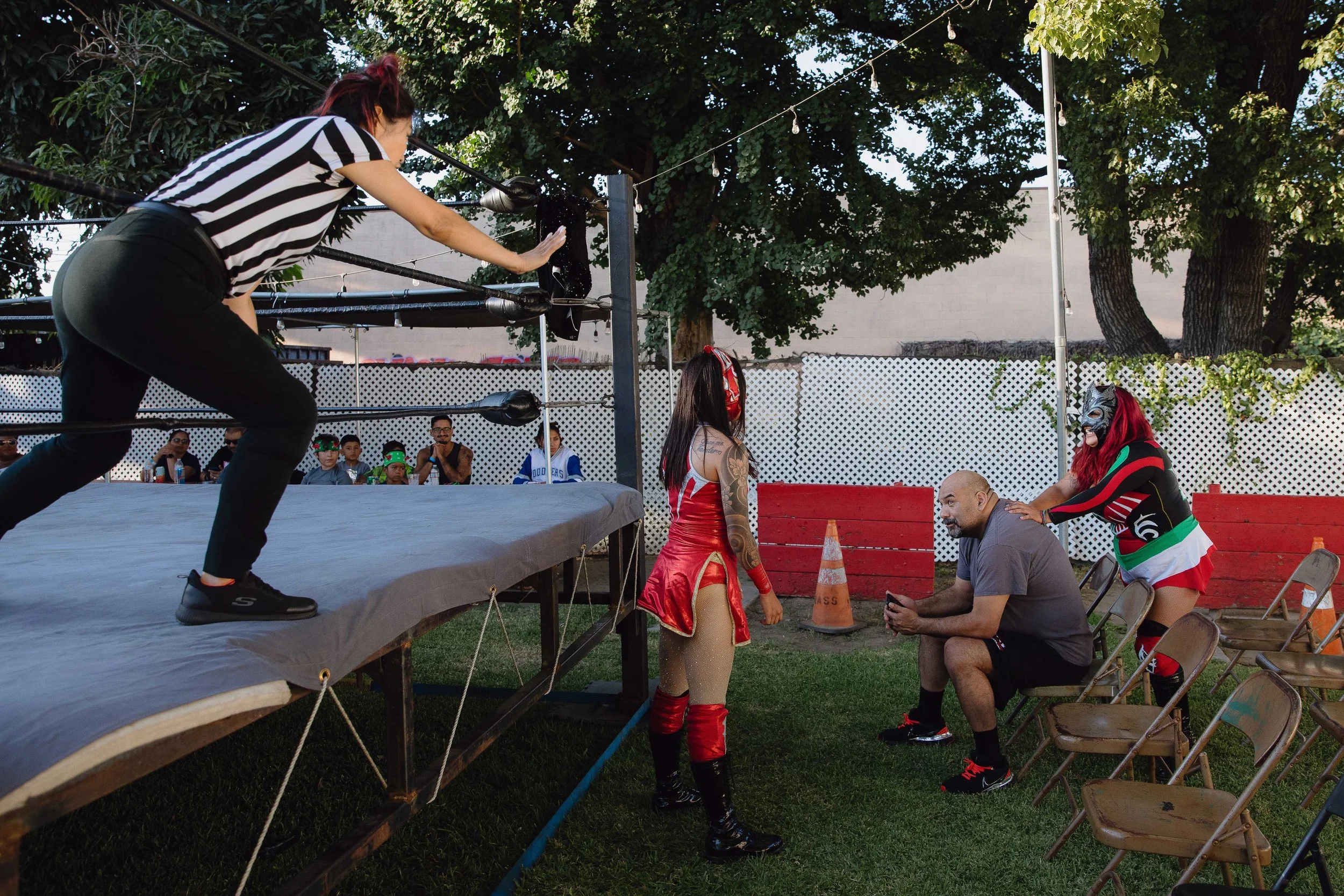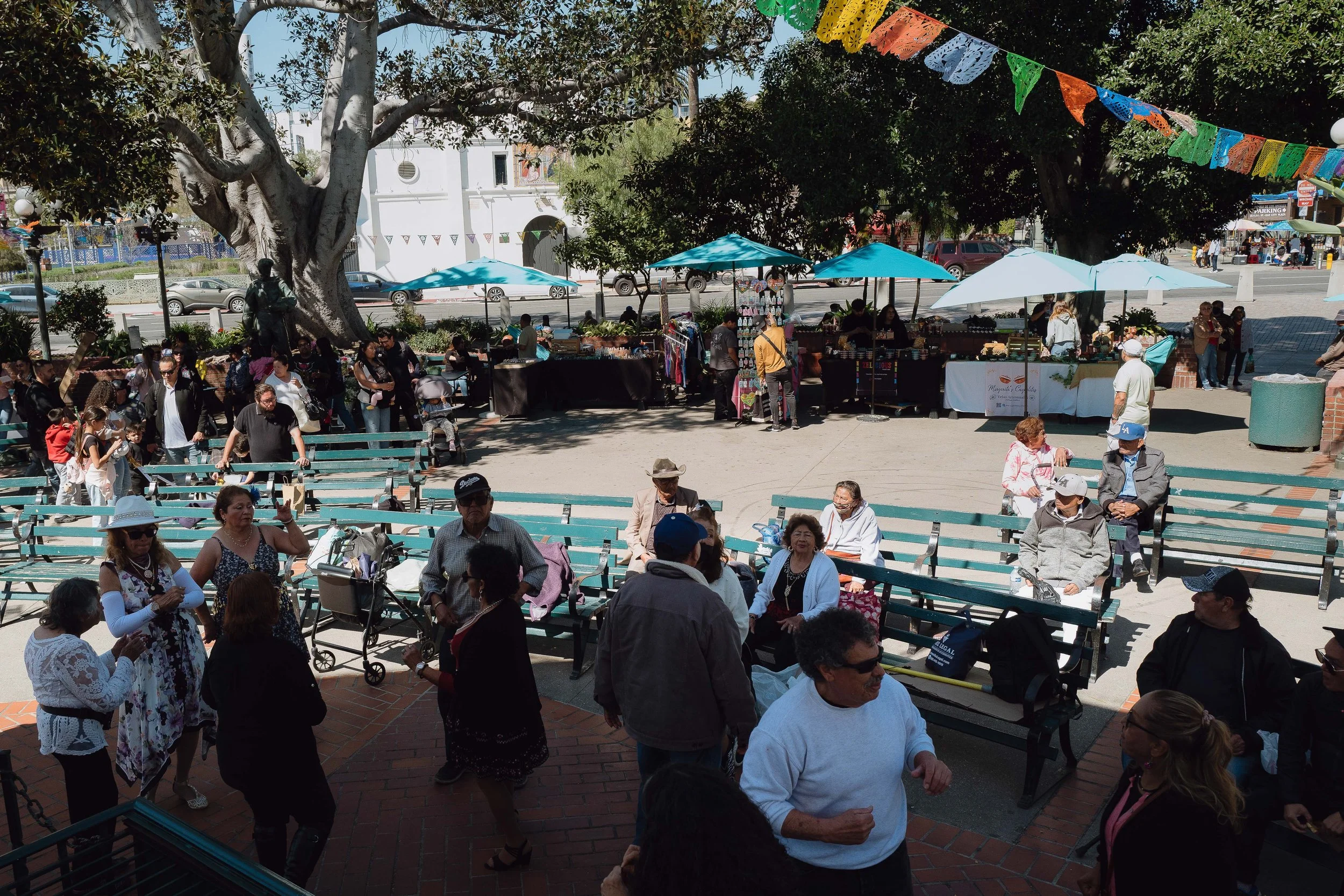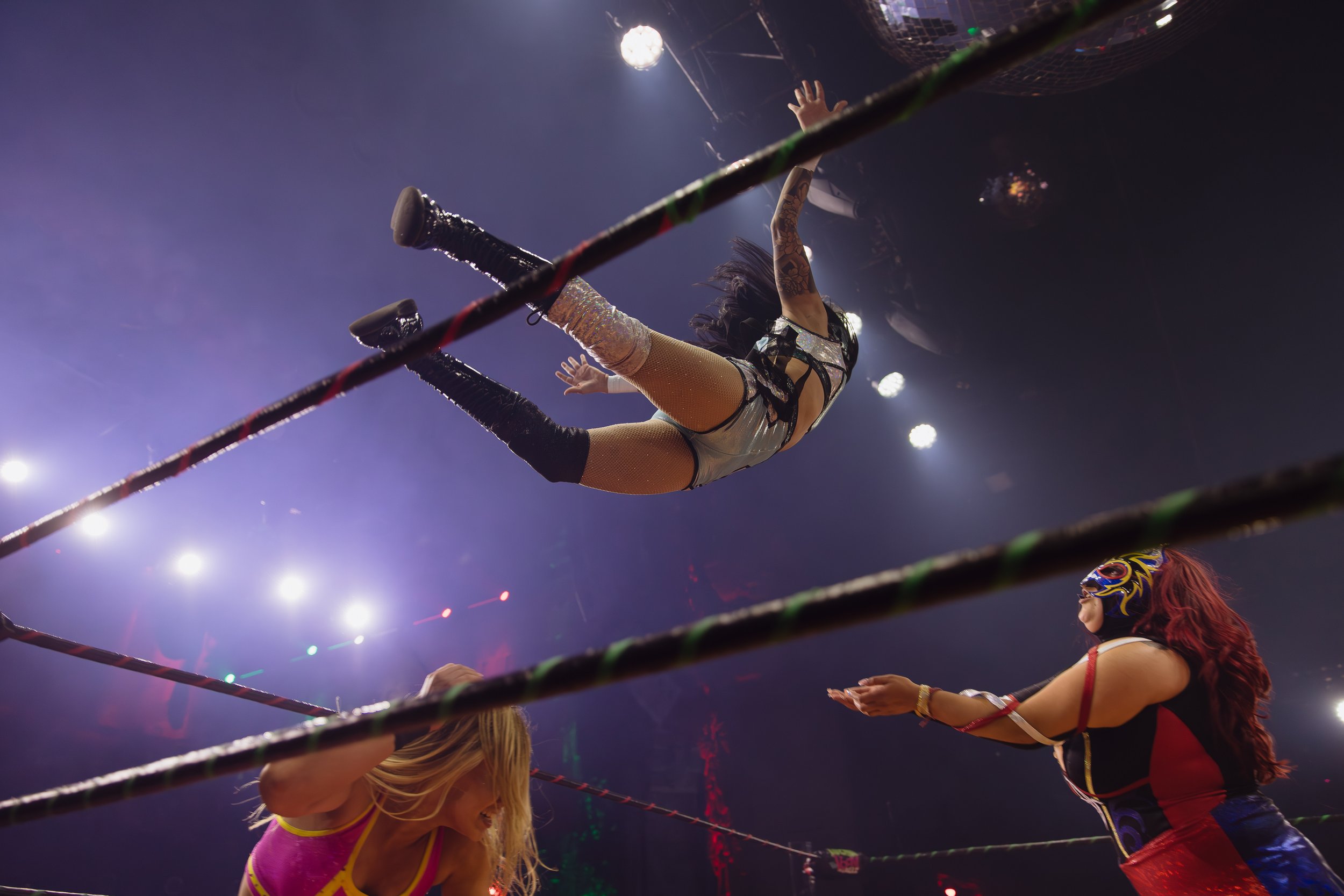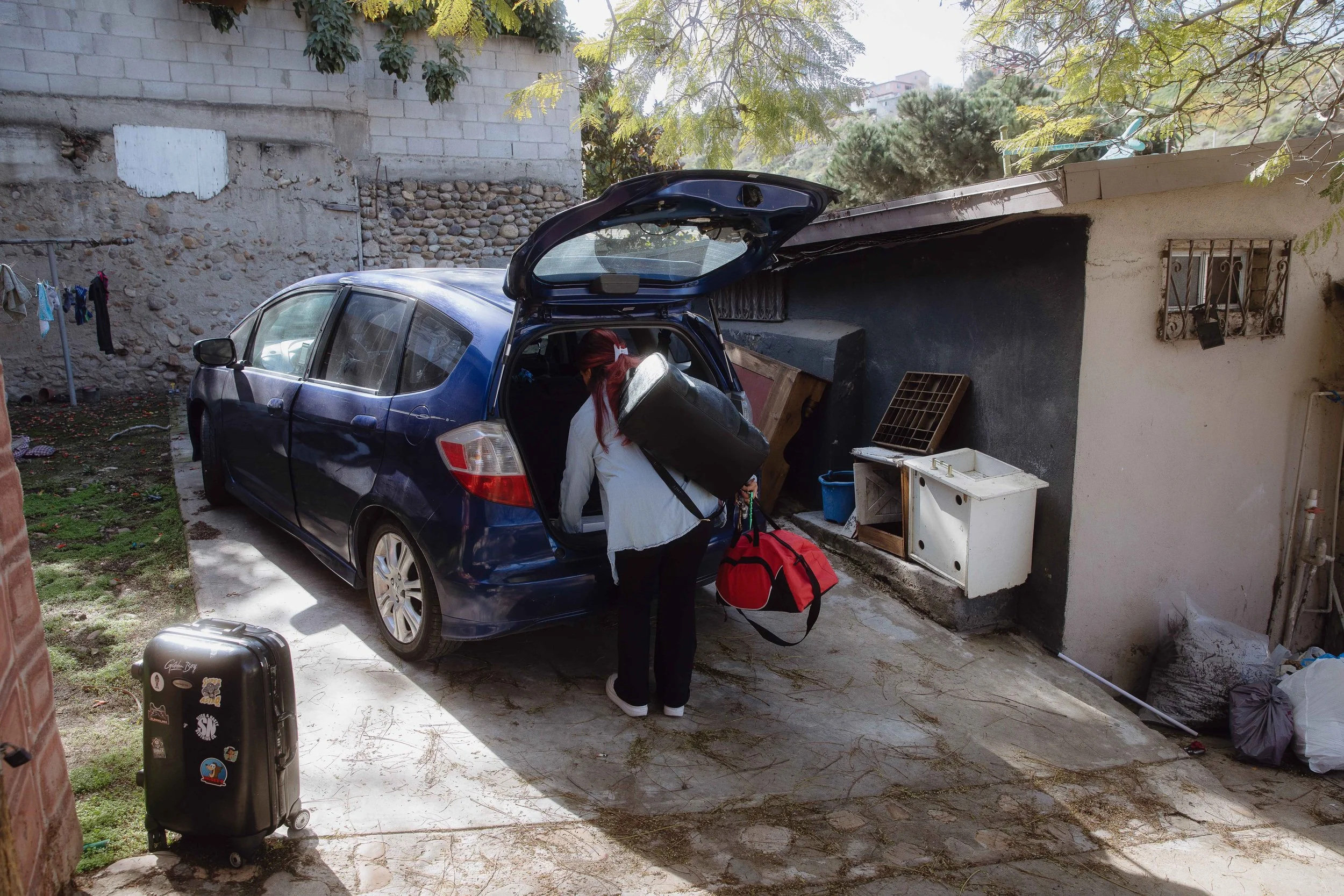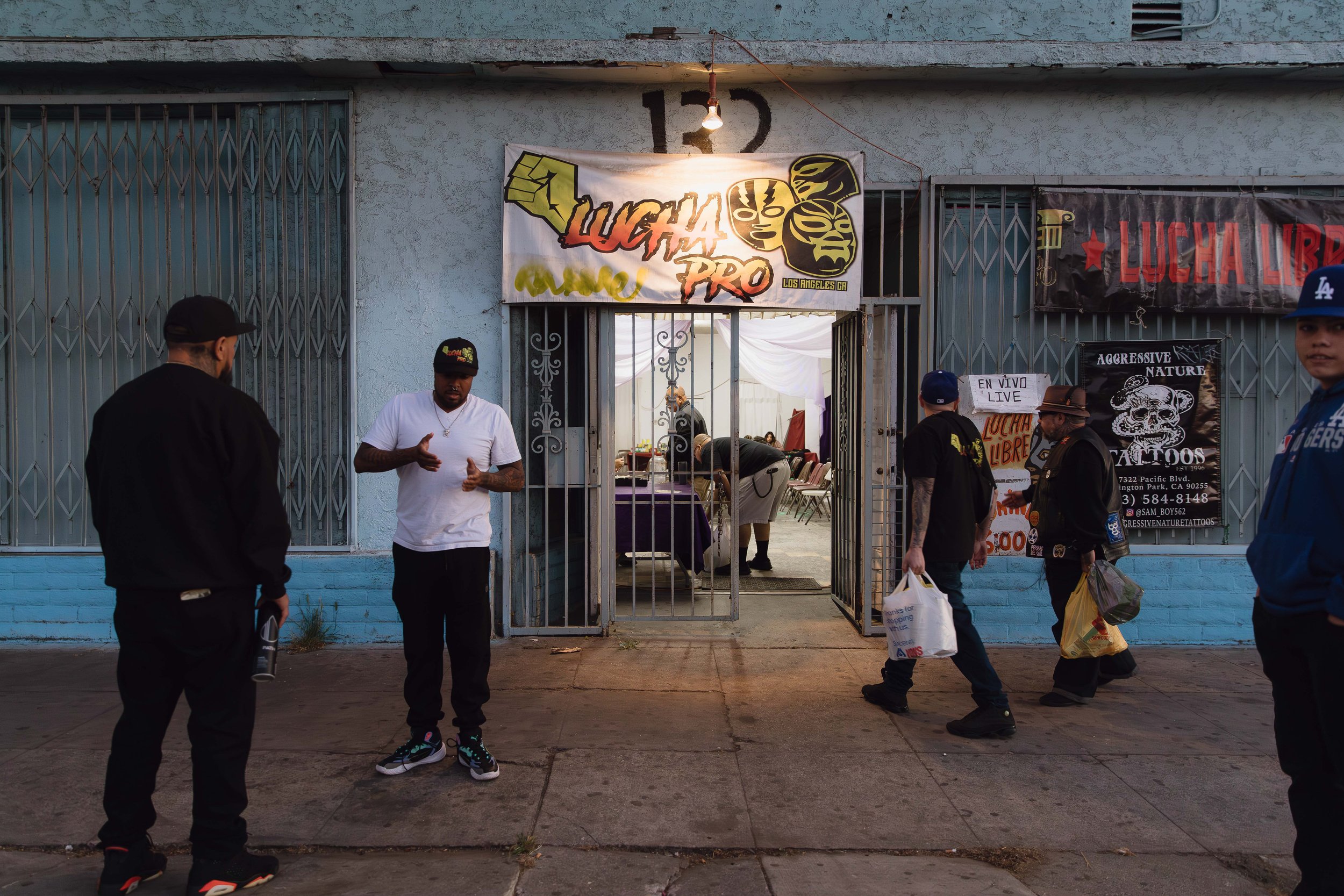The New York Times, with support from the EHRP: Women in Lucha Libre.
Tijuanense luchadora Amazona makes the long journey from Tijuana, Mexico, to Los Angeles to step into the ring at venues across the city. A single mother to a six-year-old son, she balances a day job at a logistics firm with weekend matches—donning her mask and wrestling under the bright lights. For Amazona, traveling to Los Angeles has become essential: the county offers an abundance of weekend events and far better pay.
Los Angeles is the heart of lucha libre in the U.S.—from South Central to Walnut Park, Pico Rivera, and Hollywood, the tradition of masked wrestling thrives in neighborhoods across the city.
Amazona is carving out her place in a male-dominated sport while raising her son and building community with other women luchadoras. The history of women in lucha libre has not always been welcoming—at one time, women were banned from competing in Mexico. And though progress has been made, sexism still shapes the sport today.
For many fans, lucha libre is cathartic. The fight in the ring often mirrors the struggles of life outside it. For Amazona, it’s exactly that: “When I am in the ring, I can feel all my problems leave my body,” she says. “There are difficult times, but seeing the crowd so happy keeps me going.”


